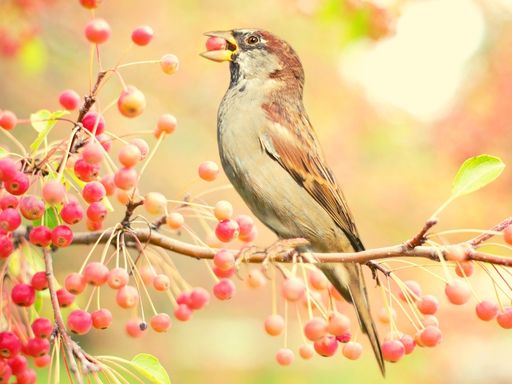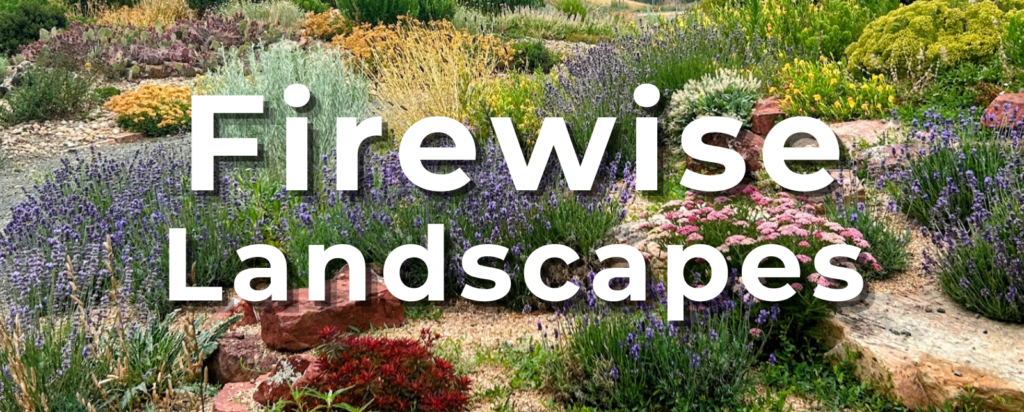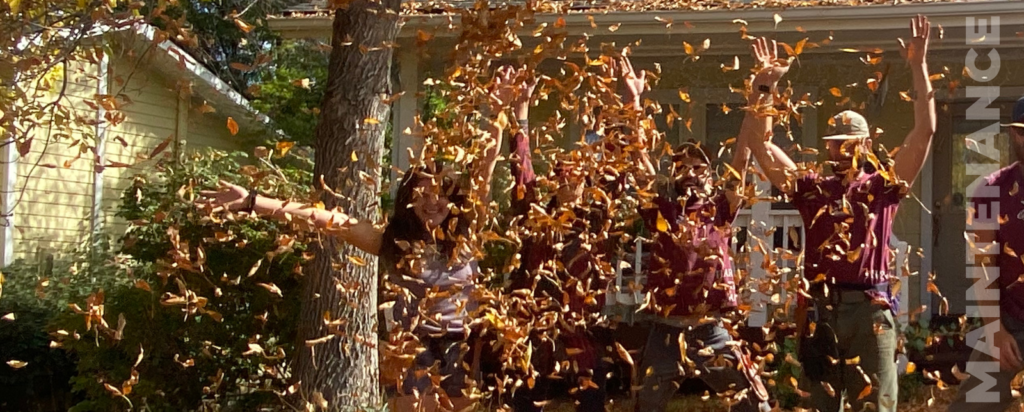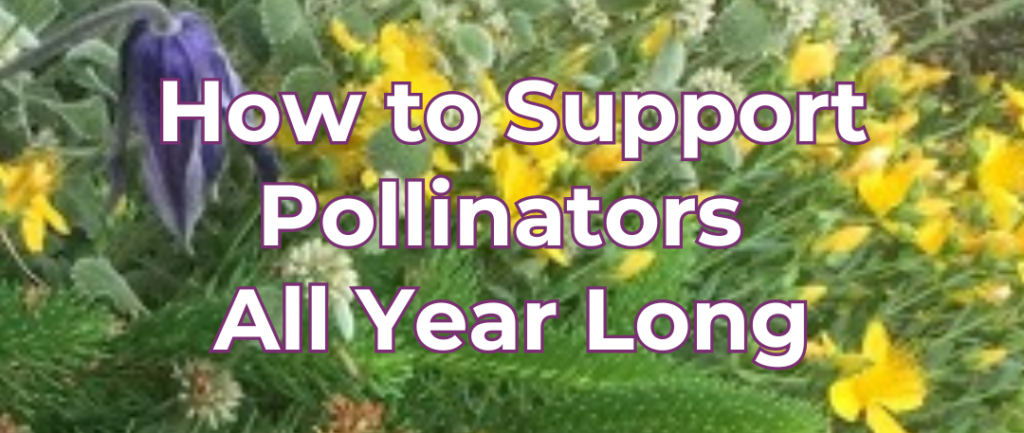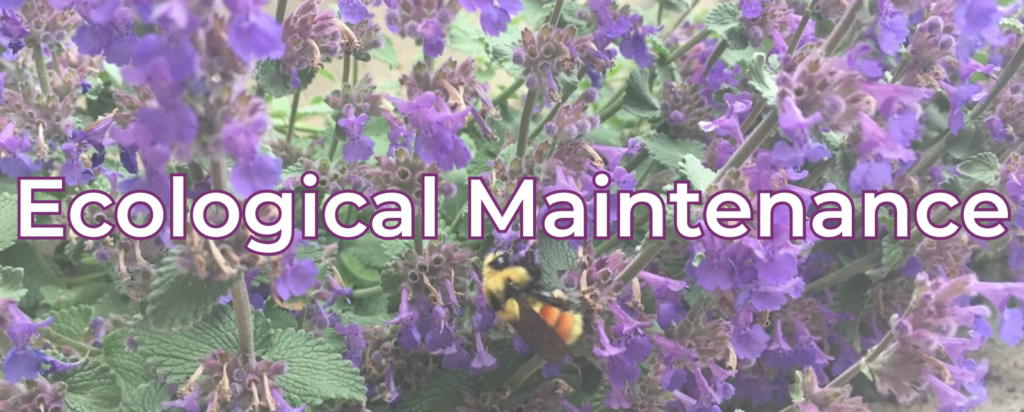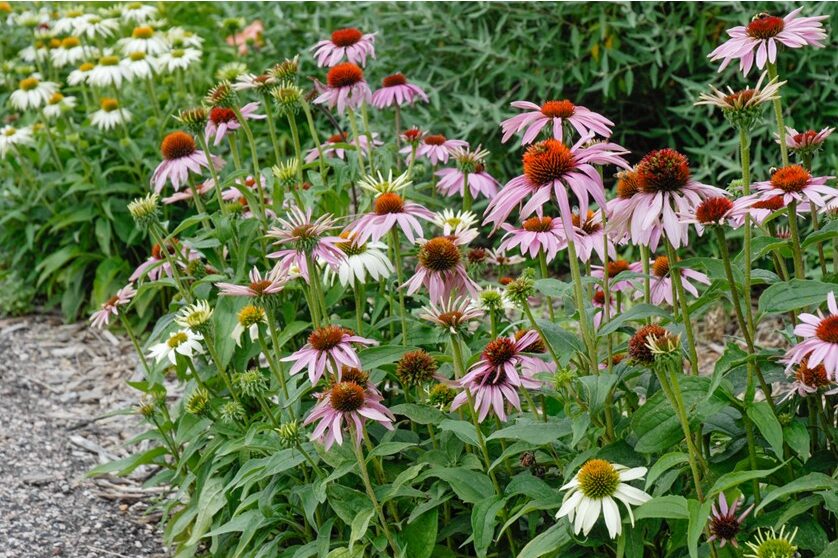Is fall clean up worth doing? Is it important? Does the timing matter? Yes, yes, and yes. Here are the whys and wherefores you’ve been yearning to know.
As we learn the ways to be more ecologically responsible gardeners, we learn that being selective in how we clean up the garden in the fall is integral to the health of pollinators, which is to say then, the health of our environment, and of our food supply. We’ve learned that they’re all connected in ways that weren’t commonly understood even a decade ago when clear cutting the garden in fall used to be the norm.
Our preferred approach is to use a light touch when readying the garden for winter. If we’re in doubt about cutting back or removing plant matter, we believe the best approach is to leave it. The reason is that pollinators lay their eggs in hollow stems of some perennial flowers, and at the base of others. Nature’s design is brilliant, preparing for spring when the eggs hatch and have fresh plant matter at the ready to feed the next generation of pollinators. Raze everything in fall and put it in a heap, or remove it from your property and you lose that key part of a healthy ecology.
That said, we know that some traditional fall clean up tasks have their place in the modern ecological garden. We attempt to strike a balance between ecological practices, plant health, and aesthetics.
LEAVES & MULCH
If you do not have mulch, or if you have living mulch, leaving the fallen tree leaves in your perennial beds will add organic matter to your soil over the winter which is a good thing. The leaves benefit your plants by adding some insulation around them for winter and it behooves the pollinators to leave them.
However, fallen tree leaves can keep the crowns of xeric plants too wet and should not be allowed to cover them or crowd around their base or else you might find that your plants rotted over the winter. And if you do have a wood-based mulch, you should remove the tree leaves because you do not want organic matter on top of your mulch. It will break down your mulch quicker, it won’t look as tidy, and it will create a situation where nitrogen in the soil gets bound up in the breaking down of that woody mulch material, making it less available for your plants which can result in stunted, yellow plants.
Removing leaves from lawns is important so that larger leaves like maples and oaks don’t form a thick soggy mat that will smother your lawn. Best practice is to use a mulching mower to break those leaves down into tiny pieces that will filter down between the blades of grass and feed the soil. Free organic fertilizer!
Mulch plays an important role in the winter garden beds. It moderates temperature – important when we don’t have a consistent blanket of snow – and prevents heaving roots due to alternating freezing and thawing. Keeping the soil temperature more consistent with the help of mulch can make the difference between some less hardy plants surviving a cold snap.
WEED WELL NOW
Now is an important time to weed to make your life easier come spring. Leaving the job of cutting back perennial plants until spring means more to do then; you don’t want to have the weeds take over then too. Get a head start and make sure your landscape is well weeded going into winter, making sure to especially focus on removal of weed seed heads to avert an explosion of unwanted masses of them next year.
WHEN & WHAT TO CUT BACK
Always remove diseased plant matter from the garden. Infected parts should go to the landfill, not the compost pile. This includes powdery mildew which routinely affects Lupine and Monarda/Bee balm in our area.
If you are struggling with this paradigm shift and can’t yet bear the sight of an ecological garden, uncut back for winter, one rule of thumb that will benefit you to follow is this: As long as plants are green, they are still making food to store for next year’s plants. Waiting to cut perennials back until they are brown – a sign they are now dormant – will help your plants be healthier and more robust with more blooms next year. I have seen catmint – and others – still be green at the end of our season, around Thanksgiving. Enjoy the green in your landscape as long as you can! And if the snow falls and covers these plants before you get a chance to cut them back, well this can be the start of your shift toward leaving some plants to cut back come spring. All the better!
Plants you never want to cut back in fall include the following:
- Those with woody stems (considered sub-shrubs) like Russian sage, Santolina and Lavender
- Ornamental grasses which provide movement and sound in the winter landscape
- Perennials with seed heads that add winter interest and feed the birds, including Yarrow, Echinacea/Coneflower, Rudbeckia/Brown-eyed Susan, Autumn Joy sedum, Baptisia/False Indigo, and Blackberry lily
- Perennials with evergreen or semi-evergreen foliage including most Penstemons, most Buckwheats, Dianthus, creeping Phlox, Ajuga/Bugleweed, Hellebores/Lenten Rose, and Torch lily
- Shrubs get pruned in the spring, so one less thing to do to get ready for winter!
I hope these tips will help you get on board with ecological gardening as you prepare for winter, and help you to embrace what may be a new look for you; winter garden beds with texture, structure, dimension, and grateful, happy wildlife. Enjoy!
To the Glory of the Garden,
Eva Montane
President, Columbine Landscapes

